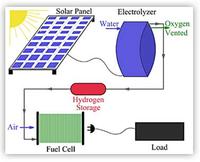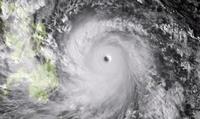-
Old twin primes conjecture puzzle soon to be resolved
Several centuries ago, the twin primes conjecture was formulated. As its name indicates, this hypothesis, which many science historians have attributed to the Greek mathematician Euclid, deals with prime numbers, those divisible only by themselves and by one (2, 3, 5, 7, 11, etc.). Under this assumption, there exists an infinite number of pairs of prime numbers whose difference is two, called twin primes (for example, 3 and 5), but nobody has been able to confirm this so far. In April 2013, the University of New Hampshire mathematician showing that you will never stop finding pairs of primes separated by at most 70 million. Now, a postdoctoral student at Université de Montréal’s Center for Mathematical Research went even further, reducing the gap to 600. This represents a huge step forward in the quest to establish the twin primes conjecture and revives a long-standing question that has not progressed in years.
-
-
B61-11 earth-penetrating weapon tested for first time in seven years
One of the main purposes of the U.S. nuclear stockpile is deterrence, and one important way to assure deterrence is to have a successful surveillance test that shows that the systems in the stockpile work. Sandia’s annual surveillance program for each weapon type consists of flight tests, lab tests, and component and material tests. On 20 November 2013, researchers conducted a rocket-driven impact test of the nonnuclear components of the B61-11 earth-penetrating weapon, the first such test in seven years. Flight tests subject the weapon to shock, vibration, temperature, rotation, weather, and more. Sandia pulls random units from the stockpile for tests.
-
-
Robots compete in performing emergency response task

Sixteen robots participating in the DARPA Robotics Challenge Trials last month performed such tasks as opening doors or climbing a ladder, all tasks aimed to speed the development of robots that could one day perform a number of critical, real-world, emergency response tasks at natural and human-made disaster sites. While most of the entries were engineered to resemble humanoids with two legs, JPL’s RoboSimian tackled tasks like climbing over rough terrain on all four of its limbs.
-
-
The causes of recent Caribbean earthquakes
A 6.4-magnitude earthquake shook Puerto Rico Monday 13 January. It caused some power outages and cracked floors, but no major damage or injuries were reported. The quake, which struck the northern coastal town of Hatillo, is one of the largest to hit the U.S. territory in recent years. This event comes four days after a 5.0-magnitude earthquake rattled Havana, Cuba. Researchers say that the earthquake in Puerto Rico occurred on the North American-Caribbean plate boundary, whereas the earthquake in Cuba happened well inside the North American plate. Although inter-plate earthquakes do occur, often on older faults that are reactivated, they are less common than those that form at plate boundaries.
-
-
Harnessing solar energy during day for use at night

In one hour, the sun puts out enough energy to power every vehicle, factory, and device on the planet for an entire year. Solar panels can harness that energy to generate electricity during the day. The problem with the sun, however, is that it goes down at night — and with it the ability to power our homes and cars. If solar energy is going to have a shot at being a clean source of powering the planet, scientists had to figure out how to store it for night-time use. Researchers have built a system that converts the sun’s energy not into electricity but hydrogen fuel and stores it for later use, allowing us to power our devices long after the sun goes down.
-
-
Spreading STEM learning opportunities in the San Diego area
UC San Diego and the San Diego region more broadly are well known for strength in STEM— or science, technology, engineering, and mathematics — education. There are numerous STEM pipeline outreach efforts already underway. What has been missing and needed, however, is coordinated and systematic action to spread learning opportunities and to plug “leaks” in the K-20 pipeline to STEM skills, degrees, and careers. The STEM Success Initiative aims to gather community and university resources to lift the region’s K-20 STEM education. The STEM Success Initiative has been launched by the Center for Research on Educational Equity, Assessment and Teaching Excellence (CREATE) at UCSD.
-
-
Using building “belt” cheaply, quickly to repair of earthquake damage
Four years after the January 2010 earthquake, 145,000 people still remain homeless in Haiti. Researchers developed a cheap and simple technology to repair earthquake damaged buildings to help to reduce these delays by quickly making buildings safe and habitable. The technology involves wrapping metal straps around each floor of the building, which are then tensioned either by hand or using compressed air tools. Unlike other repair methods, it does not require expensive materials or a high level of technical knowledge, making it ideal for use in the developing world.
-
-
New test for detecting newly emerging strains of drug-resistant superbug
Molecular assays for MRSA are used in active surveillance programs to identify colonized patients rapidly. Active surveillance is a proven strategy to reduce transmission in healthcare settings and it helps prevent infection in vulnerable patients. BD Diagnostics has received FDA clearance to market the BD MAX MRSA XT Assay for use on the BD MAX System. This is the second assay from BD Diagnostics capable of detecting newly emerging MRSA strains with the novel mecC gene.
-
-
Stimulating plant growth and increasing crop yields
Plants naturally slow their growth or even stop growing altogether in response to adverse conditions, such as water shortage or high salt content in soil, in order to save energy. They do this by making proteins that repress the growth of the plant. Growth repression can be problematic for farmers as crops that suffer from restricted growth produce smaller yields. Scientists have discovered a natural mechanism in plants that could stimulate their growth even under stress and potentially lead to better crop yields.
-
-
Funding gap makes the high costs of research at universities more onerous
Although more opportunity exists for university-based researchers to be innovative, and there is more financial support for innovation than ever before, the cost of university research is rising to new levels and presents a serious funding problem. The “real costs” of research — costs that include indirect costs — often extend far beyond support from a university’s central research office and are almost never covered by funding. As a result, the aggressive research agendas set by universities have costs that often outweigh the ultimate revenue universities hope to gain from research.
-
-
Europe facing more severe and persistent droughts
Drought is a major natural disaster that can have considerable impacts on society, the environment, and the economy. In Europe alone, the cost of drought over the past three decades has amounted to over 100 billion euros. Europe has been battered by storms in the last few years, but researchers warn that many river basins, especially in southern parts of Europe, are likely to become more prone to periods of reduced water supply due to climate change. An increasing demand for water, following a growing population and intensive use of water for irrigation and industry, will result in even stronger reductions in river flow levels.
-
-
Geoengineering measures to cool the planet would cause climate chaos
Geoengineering — the intentional manipulation of the climate to counter the effect of global warming — is being proposed as a last-ditch way to deal with the problems of climate change. New research suggests geoengineering could cause massive changes to rainfall patterns around the equator, drying the tropical rainforests in South America and Asia, and intensifying periods of drought in Africa.
-
-
Thinking outside the box: Free public education that pays for itself
A U.K. researcher proposes an innovative way to pay for college and graduate education: students would not pay for their education while at school. Rather, they will commit to paying a fixed percentage of their income (say, 6 percent) during their prime earning years (35-54, for example) to the university that awarded their degree. These student promises for a given university cohort will be bundled and sold to investors as “education securities.” Investors would receive a share of the average income for the cohort. Because average income moves with inflation, investors would be assured of getting their initial investment back plus whatever amount is necessary to cover changes in the value of their money. The securities could even be designed to include a real return (over inflation) of as much as 3 percent.
-
-
Bringing anthropological insights to bear on cybersecurity
Michael Polanyi (1891-1976), in his book Personal Knowledge, rejected the British Empiricists’ notion that experience can be reduced to sense data, and Alan Turing’s assertion that human minds are reducible to collections of rules. Rather, Polanyi said, it is tacit awareness — he later called it the “structure of tacit knowing”— which connects us, albeit fallibly, with reality. It provides us with the context within which our words and actions have meaning. Princeton’s anthropologist Clifford Geertz (1926-2006), in his The Interpretation of Cultures, built on Polanyi’s argument to say that the task of ethnography is thus to discover and interpret the secondary, or underlying (Polnayi would say “tacit”) meanings of social behavior — the “deep structure” of culture and social life. Cybersecurity experts at Kansas State University, in a 3-year, $700,000 project, take an anthropological approach to cybersecurity: they are examining the unspoken knowledge shared by cybersecurity analysts as a way to develop new automated tools that help analysts strengthen their cyberdefenses.
-
-
2013 natural catastrophes dominated by extreme weather in Europe, Supertyphoon Haiyan

Exceptionally high losses from weather-related catastrophes in Europe and Supertyphoon Haiyan dominated the overall picture of natural catastrophes in 2013. Floods and hailstorms caused double-digit billion-dollar losses in central Europe, and in the Philippines one of the strongest cyclones in history, Supertyphoon Haiyan, resulted in a human catastrophe with over 6,000 fatalities.
-
More headlines
The long view
New Technology is Keeping the Skies Safe
DHS S&T Baggage, Cargo, and People Screening (BCP) Program develops state-of-the-art screening solutions to help secure airspace, communities, and borders
Factories First: Winning the Drone War Before It Starts
Wars are won by factories before they are won on the battlefield,Martin C. Feldmann writes, noting that the United States lacks the manufacturing depth for the coming drone age. Rectifying this situation “will take far more than procurement tweaks,” Feldmann writes. “It demands a national-level, wartime-scale industrial mobilization.”
How Artificial General Intelligence Could Affect the Rise and Fall of Nations
Visions for potential AGI futures: A new report from RAND aims to stimulate thinking among policymakers about possible impacts of the development of artificial general intelligence (AGI) on geopolitics and the world order.
Smaller Nuclear Reactors Spark Renewed Interest in a Once-Shunned Energy Source
In the past two years, half the states have taken action to promote nuclear power, from creating nuclear task forces to integrating nuclear into long-term energy plans.
Keeping the Lights on with Nuclear Waste: Radiochemistry Transforms Nuclear Waste into Strategic Materials
How UNLV radiochemistry is pioneering the future of energy in the Southwest by salvaging strategic materials from nuclear dumps –and making it safe.
Model Predicts Long-Term Effects of Nuclear Waste on Underground Disposal Systems
The simulations matched results from an underground lab experiment in Switzerland, suggesting modeling could be used to validate the safety of nuclear disposal sites.
